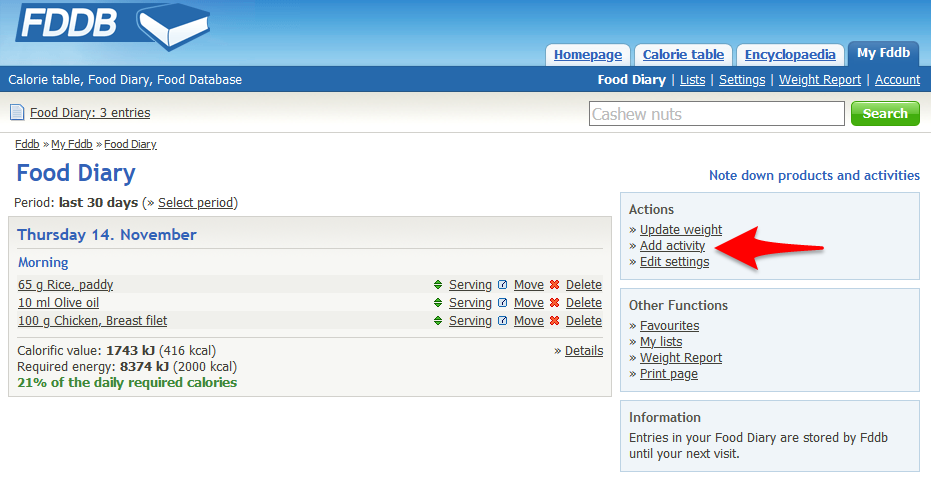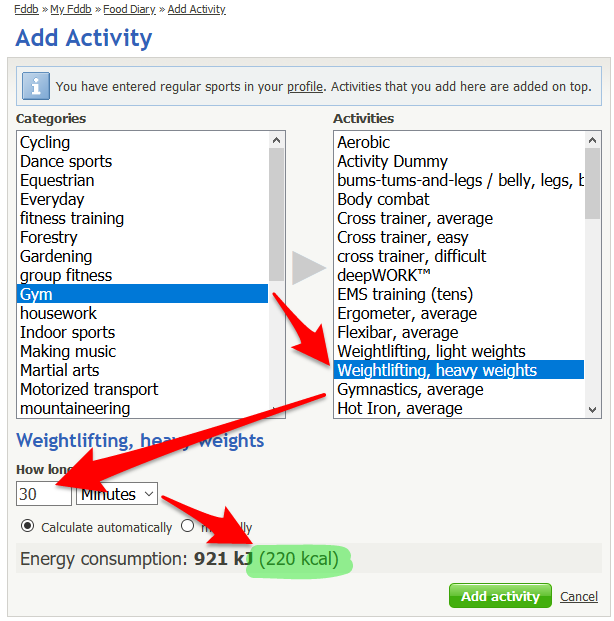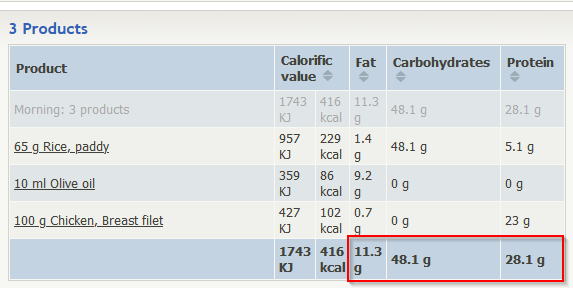

Andreas LPM
- November 14, 2019
- No Comments
Why I don’t track calories and food
Introduction
Today I will shine some light on tracking vs. setting calories. Make sure to stick around till the end where I show how to use a tracking app to design meals for a meal plan that fit your macro.
Note:
You will see a couple of screenshots from the tracker I use. It’s called FDDB and you can find it here https://fddb.info/. I use the desktop/ browser version but it also has a very useful smartphone app. BTW: It’s free and has a huge database with almost all foods in the supermarkets.
There are of course plenty good apps available like MyFitnessPal, FatSecret (Free), YAZIO, Lose It!, MyPlate Calorie Tracker. Feel free and try which one works best for you!
Table of Contents
What is food or calorie tracking?
Track food/ calories for better habits
Adherence to a diet is way more important than the diet itself. A good way to stick to a diet is, firstly to enjoy it. Secondly, you have to stick to it, do it for long enough. Creating a new habit helps with that big time!
How can tracking food help create better habits?
When you begin to track the app shows you how good you’re doing. Seeing the right numbers at the end of the day is a reward. It makes you feel good. Rewards are hugely important in forming new habits. They reinforce the desired behavior.
The great thing about tracking food is: Not only are you creating the habit of eating better (the app shows you very bluntly what junk you ate), but also seeing the right numbers every day and feeling good about what you see will help create this new habit.
Related: What is a habit?
The Downside of Tracking

The main problem I see with tracking is this:
You use a tracking app to help you loose or gain weight. So, your issue is that you naturally eat too much or too little. But the app will only measure what you did. You still have to make sure to correct that the next day. If you had a big unplanned meal, that’s easy to avoid. But you might only be off by a couple hundred calories. Then what? The app doesn’t tell you how much the next day. You guess and hope to hit your numbers. And that is in my opinion the main problem that tracking of any kind has.
Before we get into a solution for that problem I like to share a few tips that can help you make better use of tracking apps.

FREE NO-MATH CHEAT SHEET
Download my cheat sheet to set the right food amounts to jump-start your diet. no math. Just pick and choose.
Tips to make better use of tracking apps
#1 What to do when you slipped?
- Breakfast: DIY cereal with oats, nuts, berries, protein powder and milk: 600kcals
- Lunch: Ordering Chinese at work + Coke 1000kcals
- Dinner: 200kcals (meh)
- You can suck it up, promise to watch this better in the future and enjoy some fruit and vegetable pieces to fulfill the habit of eating something. (Which is the smart way.)
- You could also eat normal meal, count that as a “cheat meal” and remember during the weekend that you already had your “extra”. (This is smart too.)
- The third option is to eat a normal meal, count it as a “cheat meal” and make sure to do an extra hour of workout so you can enjoy the nice meal you planned to have in that restaurant that you like so much. (Again, a very smart move.)
What you shouldn’t do is eat normal and forget it for the rest of the week. But, admittedly if that happens every now and then: It doesn’t really matter that much.
#2 Account for activities


#3 Tracking Macros
(That is one reason why I always set protein first whenever I create a meal plan.)
Tracking vs. Setting

FREE NO-MATH CHEAT SHEET
Download my cheat sheet to set the right food amounts to jump-start your diet. no math. Just pick an choose.
How I use tracking apps/ How to use tracking apps correctly
The next step is rather simple. Let me show you with an example how your can use a tracking app to design a meal that has a desired macro setup.
Example Meal
- 30gr of protein from chicken
- 12gr of fat from olive oil
- 50gr of carbs from rice
Very basic, nothing fancy. So, pull up the tracker and add each ingredient with some starting amounts. You will get a feeling for the amounts over time. If you’re totally new to this try 100gr of any protein and carb and 20gr/ ml for any fat source as a starting point.
Note:
Let’s have a look at what the tracker gives us here:
Round #1

Round #2

I think we are there, now! Again, on the very left you see what I plugged in this time: Chicken breast was untouched. But rice was reduced to 65g and olive oil is down to 10ml.
Taking this one step further:
You can use different combinations of seasoning, spices and vegetables to get multiple variations of a meal that has the same nutritional setup.
Become Lazy!
Conclusion
- Tracking apps are great to see where you go and how far you’re off. You can take that new gained information and adjust the next day.
- Tracking food helps by creating good habits.
- The down side is obviously that you might be surprised that you over eat a lot or only have a little snack left at the end of the day.
- The other way around can be just as shocking: Knowing you still have to eat another big meal.
- That’s okay, just make sure to get back on course.
- Avoid this pitfall: The worst thing that can happen is you develop a habit of over or under eating and then compensating by just eating a big meal.
- Remember the 90/10 rule (90% “diet” meals, 10% “fun” meals)
- If you hit the gym regularly or have a very taxing day job make sure to account for that. Most apps will help you there.
- Be honest with the duration of the activity.
- You can also use a tracking app to set calories instead of just recording.
- This can happen right before every meal
- Or use the tracker to lay out a meal plan for your own for the next weeks
- If you go about it with a little bit of thinking and trying to be lazy you can work this through very quickly.
- Also, don’t get hung up on hitting the exact numbers! A gram or two difference is no problem at all.
- Use seasoning, spices and different combinations of vegetables to create multiple different meals that consist of the same macros.
Do you track calories, food and macros? Have you ever thought of using the app like this? Let’s discuss and share in comments below!

FREE NO-MATH CHEAT SHEET
Download my cheat sheet to set the right food amounts to jump-start your diet. no math. Just pick an choose.
